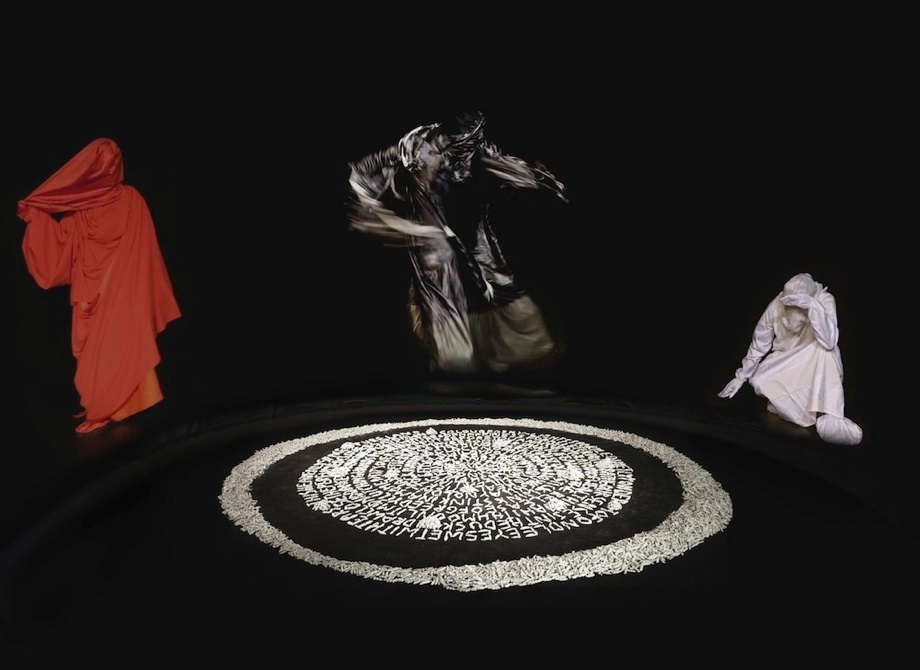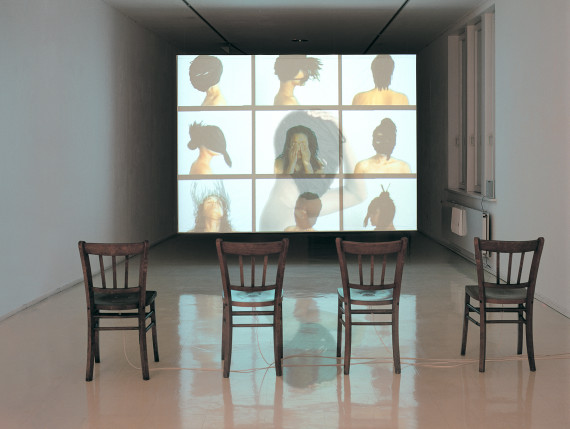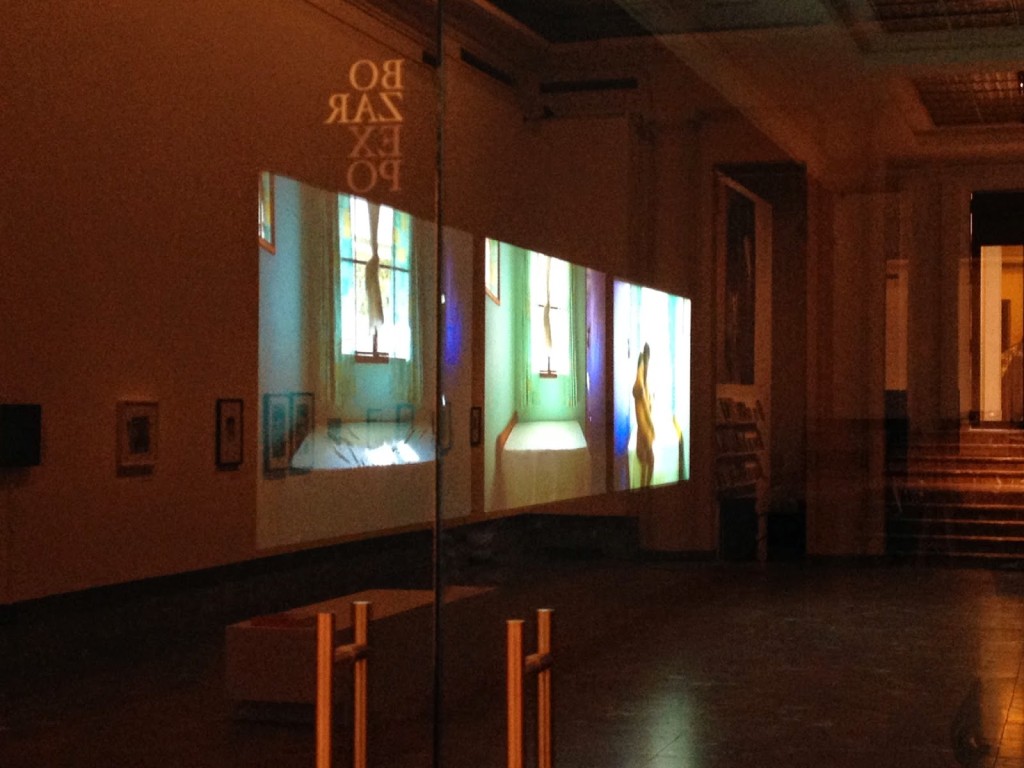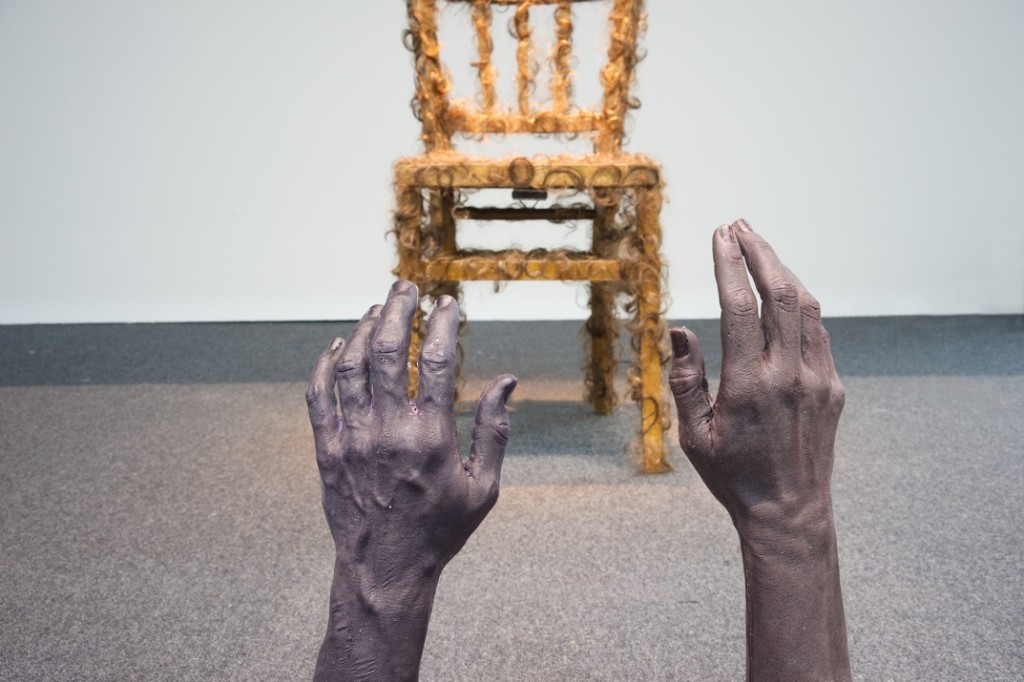
Mwangi Hutter is one of the participants of ‘Total Art: Contemporary Video’.
Turquoise Realm, video installation.
National Museum of Women in the Arts, Washington.
Total Art: Contemporary Video
Until October 12, 2014
Women artists around the world were pioneers of video art in the 1960s and 1970s. Early videos were often recordings of performances or single-channel shorts that critiqued mainstream media. Video artists today are attuned to popular media formats rather than critical of them. To create immersive, experiential works, artists design elaborate stage sets, film at remote locations, incorporate digital technology and animation, and meticulously plan viewing spaces.
Featuring recently acquired works in NMWA’s collection as well as loans from private and public collections, Total Art highlights the inventive processes that sustain women artists’ position at the forefront of video. Total Art reflects the continued global scope of video.
The exhibition features works by Dara Birnbaum, Kimsooja, Mariko Mori, Mwangi Hutter, Alex Prager, Pipilotti Rist, Michal Rovner, Margaret Salmon, Eve Sussman/Rufus Corporation, and Janaina Tschäpe.
Turquoise Realm, video installation.
ABOUT Mwangi Hutter:
1.
Ingrid Mwangi was born in Nairobi, Kenya. Robert Hutter was born in Ludwigshafen/Rhein, Germany. They both received New Artistic Media degrees from the University of Fine Arts Saar, Saarbrücken, and have received scholarships from the Studienstiftung des Deutschen Volkes, and residency scholarships of the Rhineland-Palatinate studio at the Cité Internationale des Arts, Paris.
After working together for several years and marrying, Mwangi and Hutter merged their names and biographies and became a single artist, Mwangi Hutter. Working with video, photography, installation, sculpture and performance, they use themselves as the sounding board to reflect on changing societal realities, creating an aesthetics of self-knowledge and interrelationship.
Mwangi Hutter live and work in Ludwigshafen/Rhein and Berlin, Germany and Nairobi, Kenya.
2.
Artist Ingrid Mwangi, the daughter of a Kenyan father and German mother, moved from Nairobi to Germany as a teenager. From the early stages of her career, her experience living on two continents and her African-European heritage shaped her media and performance work, which is principally concerned with identity and social conventions. Robert Hutter completed studies in sculpture and painting at Freie Hochschule für Musische und Bildende Künste–Alanus Hochschule in Bonn/Alfter, Germany. Through his multi-media works he examined the broad topic of social justice.
Mwangi and Hutter began working together in the 1970s and in 1975 formed their collaborative in Nairobi Ludwigshafen, an invented location that is a composit of Ludwigshafen, Germany and Nairobi, Kenya, the two cities where they continue to reside today. Mwangi Hutter view their work as a common vision arising from two bodies, two minds, dual histories, and the continuous merging of expression.
Through performance, video, digital photography, and installation, Mwangi Hutter use their bodies and diverse surroundings as sounding boards to create challenging and often difficult work that explores aesthetics, self-knowledge, and universal human experiences. For more information about their work, please see ingridmwangiroberthutter.com.
 A pure land, video installation.
A pure land, video installation.
The artist group Mwangi Hutter was born in Nairobi and Ludwigshafen, where the artists Ingrid Mwangi and Robert Hutter also work. The artists themselves speak of an entity, in which the summation and dissolution of the one into the other is created. Their videos and photography continually reflect on events in Africa, along with the relationship between blacks and whites, as well as women and men. Ecology is as much a central theme as gender is. The artists play with the illusion of the reality …





